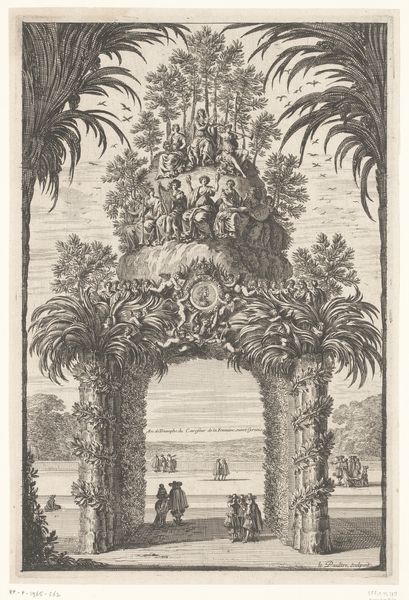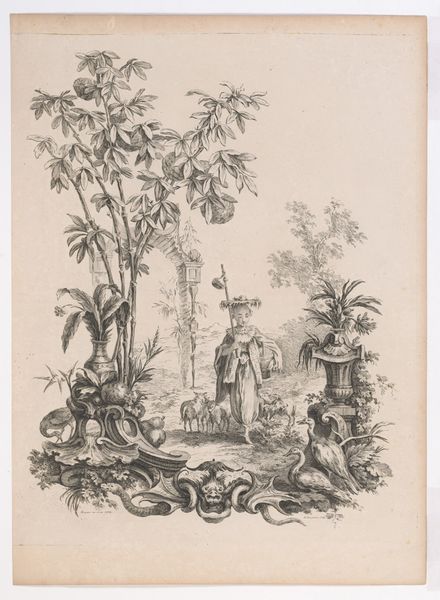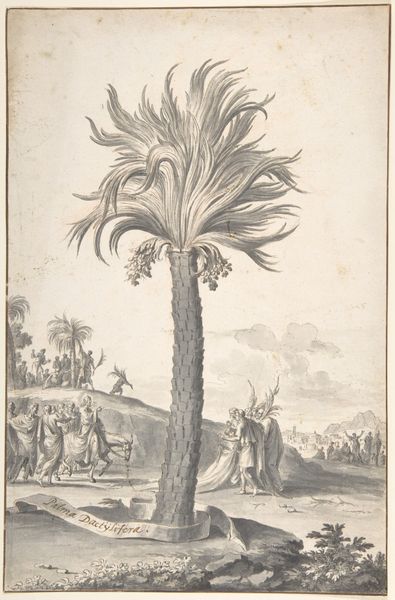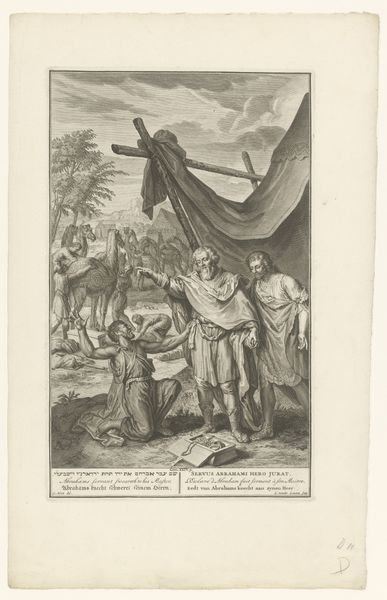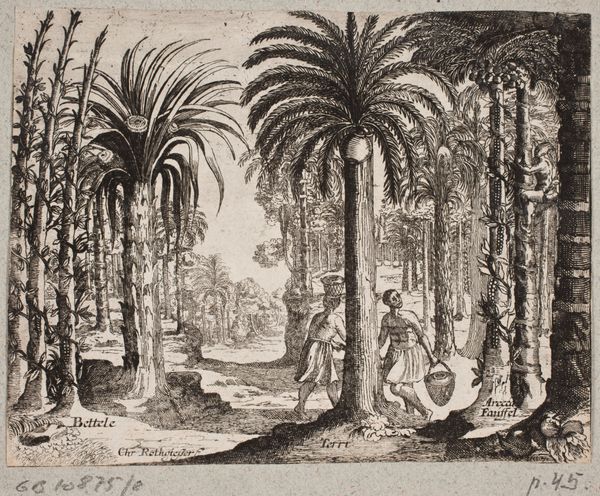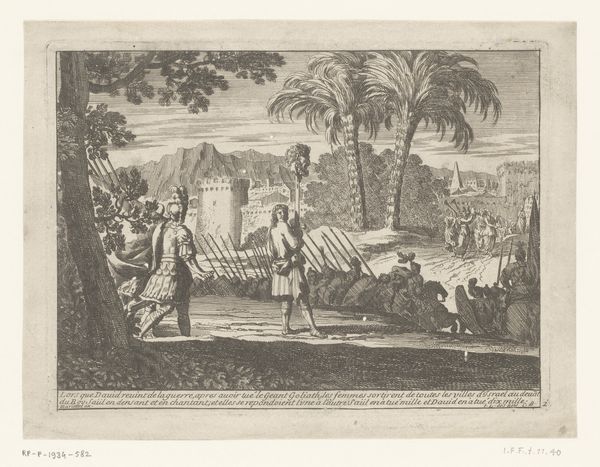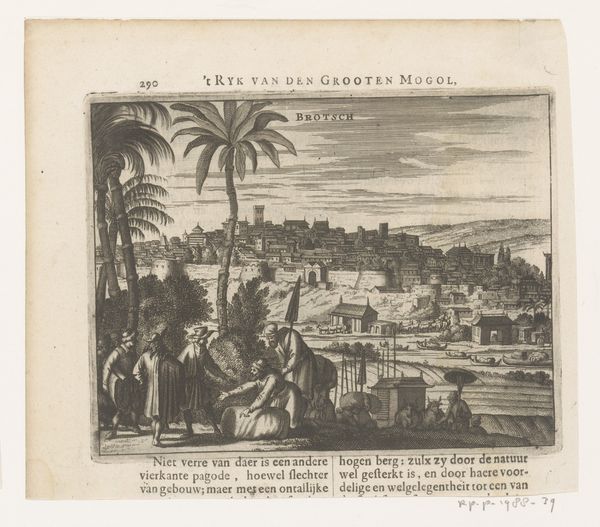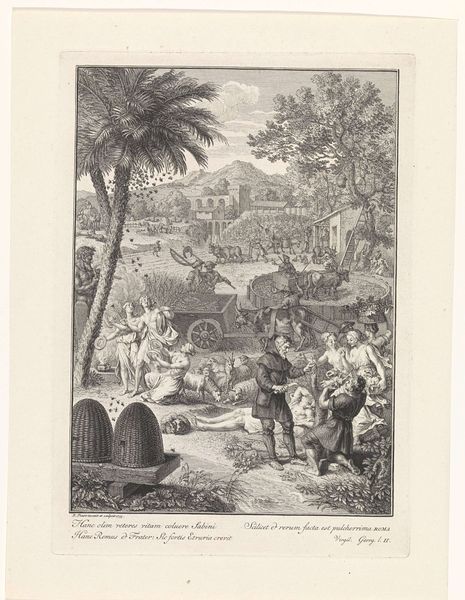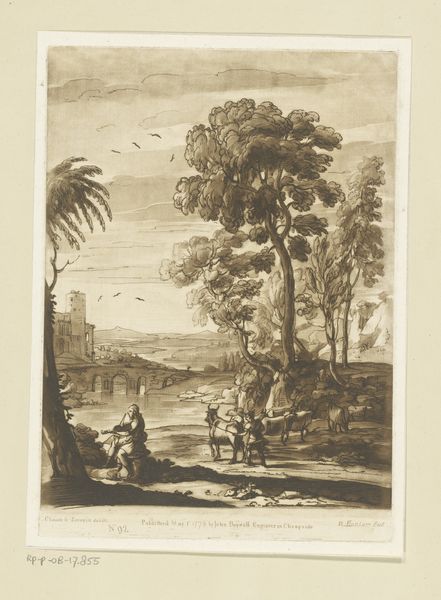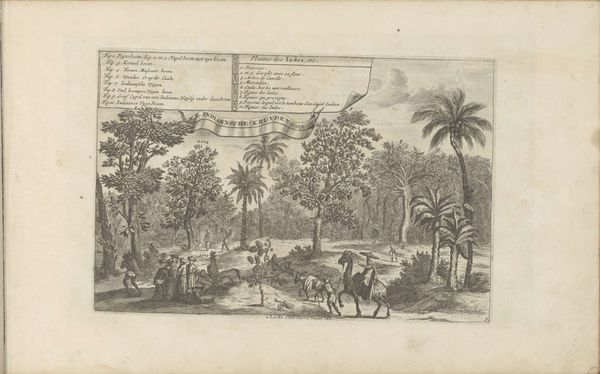
print, engraving
#
dutch-golden-age
# print
#
old engraving style
#
landscape
#
figuration
#
genre-painting
#
engraving
Dimensions: height 196 mm, width 156 mm
Copyright: Rijks Museum: Open Domain
Editor: This is "Bengaalse acrobaten vermaken de Nederlanders," an engraving from 1676. It's so detailed, depicting a performance, seemingly in Bengal, for an audience of Dutch colonizers. It makes me think about the power dynamics at play. What do you make of it? Curator: Power is definitely visible here, not just in the subject, but the very *making* of this print. Consider the raw materials – the paper, the ink, the metal plate – each embodies global trade networks shaped by colonial extraction. And engraving, as a reproductive medium, means this image itself became a commodity, circulated to reinforce European perceptions of the "Orient." Editor: So, the image itself participates in the colonial project, not just depicts it? Curator: Exactly. And think about the labor involved. A European artist, likely never having witnessed such a scene firsthand, interprets accounts and sketches from colonizers, turning Bengali bodies and cultural practices into a spectacle for a European audience. We see Bengalis reduced to acrobatic figures, their bodies serving as instruments of entertainment. How does the artist's *labor* itself become a means of shaping narratives and consuming culture from afar? Editor: That's a good question. I hadn't considered how the materials themselves were involved in a bigger, exploitative network. Curator: The artist probably benefited, even indirectly, from enslaved people or extracted raw resources when creating this work. And look at how this relates to present-day practices like fast fashion, for example. Editor: Right, I hadn’t thought of that. Curator: Ultimately, "Bengaalse acrobaten vermaken de Nederlanders" offers insights into the consumption and making of a society that reinforces imbalances, and the exploitation and oppression from centuries ago. Editor: This has definitely made me consider this piece—and others—in a new light.
Comments
No comments
Be the first to comment and join the conversation on the ultimate creative platform.
